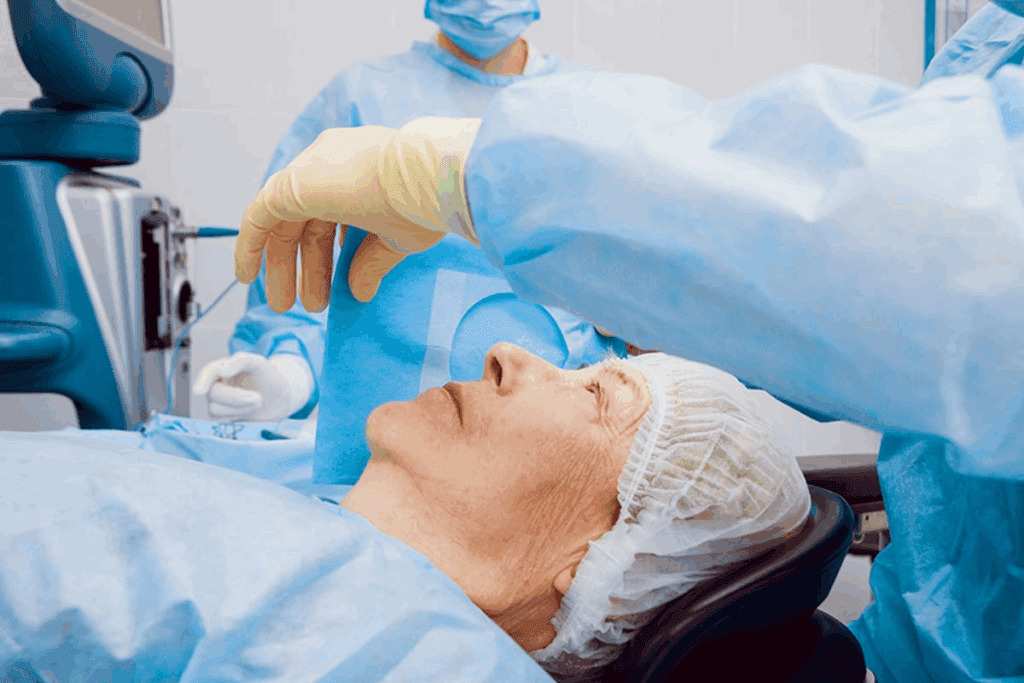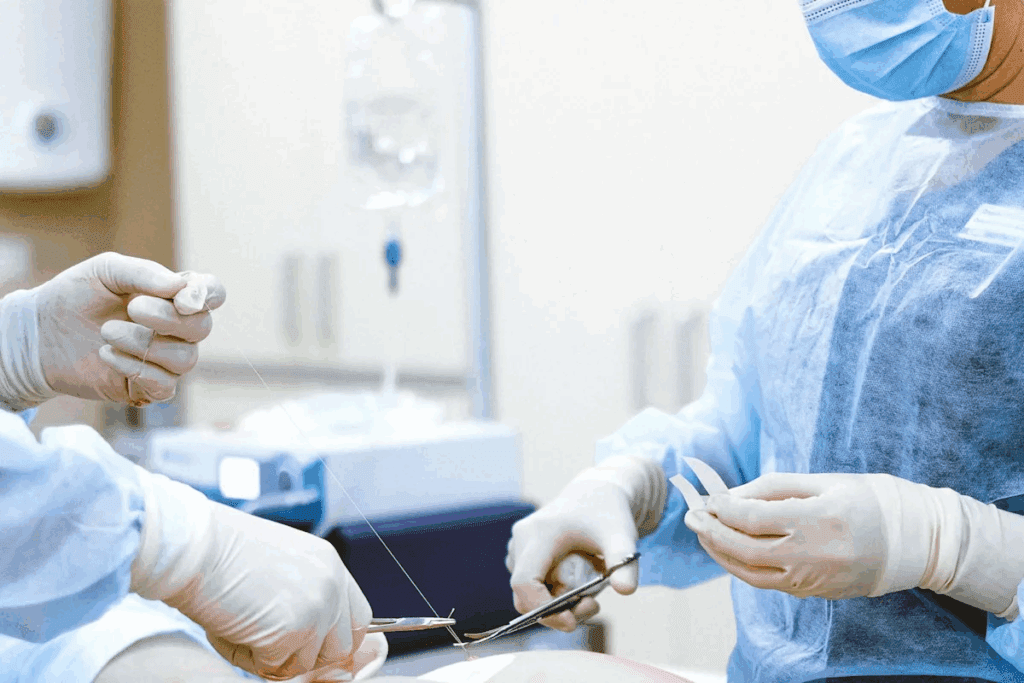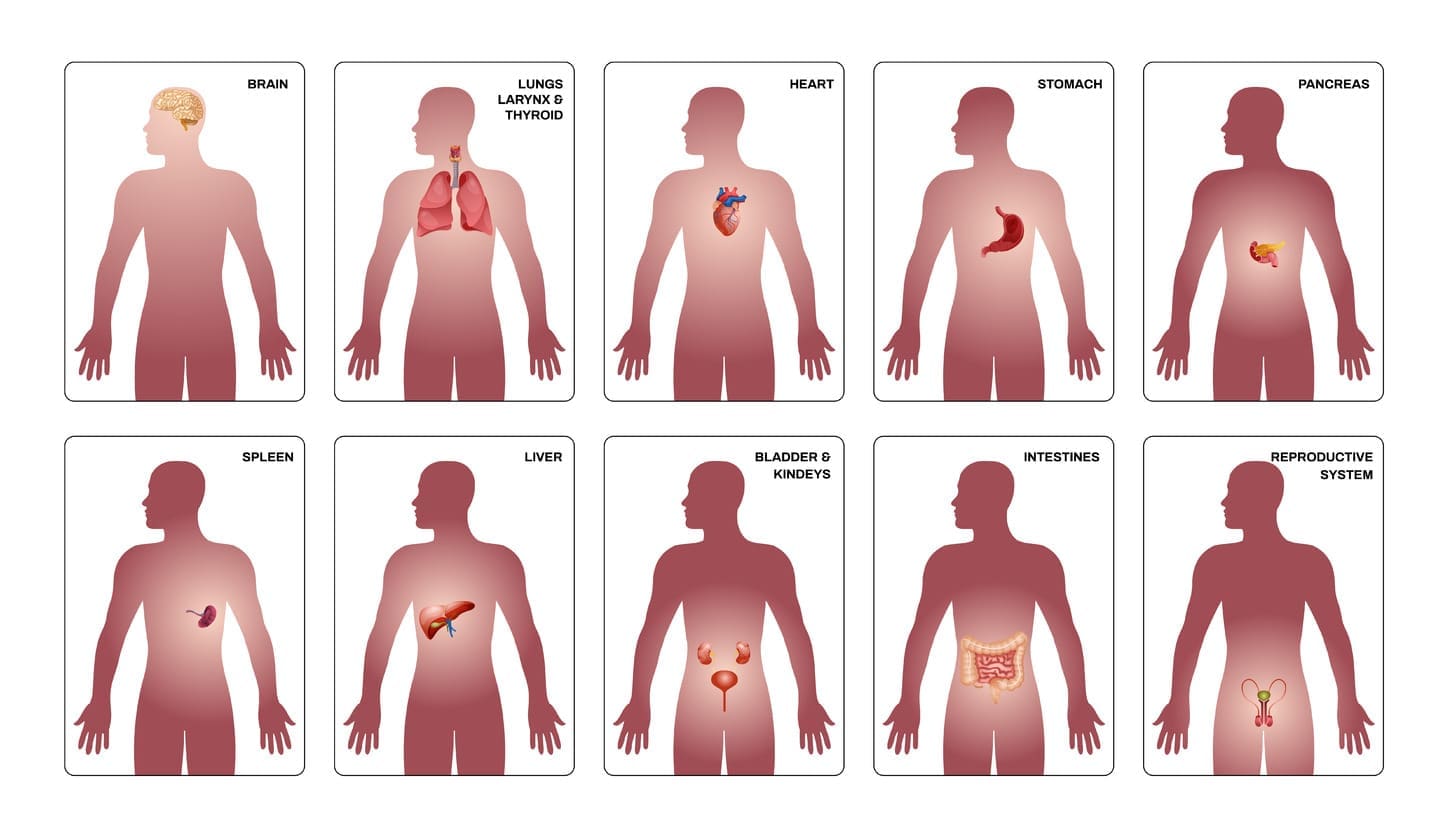Last Updated on November 26, 2025 by Bilal Hasdemir

At Liv Hospital, we understand that carotid artery surgery is a major procedure, and knowing what to expect afterward can make a big difference in your peace of mind. Many patients search for healing carotid artery surgery recovery time pictures to better understand what normal healing looks like. These images can help set expectations and ease worries about incision appearance and swelling.
Carotid endarterectomy, the procedure to remove plaque from the carotid arteries, usually takes about one to two hours. Patients typically stay in the hospital for one to two days for close monitoring. During this time, your medical team will observe your vital signs and ensure your recovery is on track.
When you return home, recovery continues gradually. Most people can resume normal activities within a few weeks. Looking at healing carotid artery surgery recovery time pictures can help you visualize the stages of recovery and understand what’s typical as your incision heals.
At Liv Hospital, our team is with you every step of the way. We manage pain, monitor your healing progress, and provide expert guidance to help you recover safely. With the right care and understanding, supported by healing carotid artery surgery recovery time pictures, you’ll be well-prepared for your journey to full recovery.
Key Takeaways
- Carotid artery surgery typically lasts one to two hours.
- Hospital stay is usually one to two days.
- Most patients return to light normal activities within 1 to 2 weeks.
- Close monitoring and pain management are provided during the hospital stay.
- Gradual return to normal activities is expected within a few weeks.
Understanding Carotid Artery Surgery

Carotid endarterectomy is a surgery that saves lives by removing plaque from the carotid arteries. This greatly lowers the risk of stroke. Our experienced team is here to support you every step of the way.
What is Carotid Endarterectomy?
Carotid endarterectomy is a surgery to remove plaque from the carotid arteries. These arteries carry blood to the brain. It’s done to treat carotid artery stenosis, where arteries narrow due to plaque.
Our surgeons make a small incision in the neck to reach the carotid artery. They then remove the plaque. This makes sure the artery is clear and blood flows well to the brain.
Why is This Surgery Performed?
This surgery is mainly to prevent strokes. Plaque in the carotid arteries can cause a stroke if it ruptures or blocks blood flow. Removing the plaque lowers stroke risk and improves health.
It’s recommended for those with severe carotid artery stenosis, usually over 50%. The decision to have surgery is based on tests and medical history.
Typical Duration of the Procedure
The surgery usually takes one to two hours. But you’ll spend more time in the operating room because of preparation and recovery. Our team will tell you more about what to expect.
Every patient is different, and the surgery details can vary. We’re committed to personalized care and answering your questions.
The Immediate Post-Operative Period

After carotid artery surgery, your healthcare team watches you closely. They make sure you’re recovering well. This is key to catching and fixing any problems early.
Hospital Stay Duration
Most people go home in one to two days. You’ll stay overnight to let the team check on you. This helps them see if you’re healing right and fix any issues fast.
Monitoring After Surgery
Your medical team keeps a close eye on you. They check your blood pressure, pulse, and brain function. This is important to spot any problems early.
Good monitoring helps manage risks from the surgery. It makes sure you’re on the right track to getting better.
Pain Management and Initial Recovery
Managing pain is a big deal right after surgery. You’ll get medicine to help with that. A few hours later, you can start eating and drinking again, which helps you get stronger.
Starting to move around is encouraged as you start to get better. Our team is here to help you every step of the way. They want your recovery to be as easy and smooth as possible.
The First Week of Recovery
After carotid artery surgery, you’ll need to know what to expect in the first week. This time is important for a good recovery.
What to Expect When You Return Home
When you get home, you might feel some pain. This includes a sore throat and discomfort at the incision site. The area might look swollen and bruised, but it should get better in a few weeks.
Resting and avoiding hard work or heavy lifting are important. This helps your body heal without any problems.
Managing your activities wisely is key. Avoid driving, heavy lifting, or bending. These can strain your body and slow down healing.
Managing the Incision Site
It’s important to take good care of the incision site. Keep it clean and dry, and follow our care instructions. You might need to cover it for a few days after surgery.
Monitoring for signs of infection is very important. Look out for redness, swelling, or discharge. If you see anything unusual, call your healthcare provider right away.
Common Symptoms During Early Recovery
In the early days of recovery, you might feel numbness or tingling near the incision site. These feelings usually go away as you heal. You might also have a sore throat for a few days.
| Symptom | Expected Duration | Action to Take |
| Sore Throat | A few days | Rest your voice, stay hydrated |
| Incision Site Pain | About a week | Follow pain management instructions |
| Numbness/Tingling Around Incision | Variability improves over time | Monitor, report if persistent or worsening |
Knowing what to expect and how to manage your recovery can make the first week easier. If you have any questions or concerns, always talk to your healthcare provider.
Healing Carotid Artery Surgery Recovery Time Pictures and Progression
Recovering from carotid artery surgery can be reassuring and important. Seeing how the incision heals is key to a smooth recovery.
Visual Timeline of Incision Healing
The incision site goes through stages after surgery. At first, it might look red, swollen, and bruised. As time goes on, the redness and swelling will lessen.
Normal vs. Concerning Appearance
It’s important to know the difference between normal and concerning signs. Normal healing might include some redness, swelling, and slight pain. But if you see more redness, swelling, discharge, or fever, it could mean a problem.
| Normal Signs | Concerning Signs |
| Mild redness and swelling | Increased redness and swelling |
| Slight discomfort | Severe pain or tenderness |
| Minimal discharge | Pus or significant discharge |
Tracking Your Recovery Progress
It’s important to watch how you’re healing. Keep an eye on the incision site and report any changes to your doctor. The stitches are usually taken out 7 to 10 days after surgery, or you might have dissolvable ones.
Tips for a Smooth Recovery:
- Keep the incision site clean and dry.
- Avoid soaking the incision for the first 2 weeks.
- Follow your doctor’s instructions for post-operative care.
By understanding how the incision heals and knowing what to watch for, you can have a successful recovery from carotid artery surgery.
Weeks 1-2: Early Recovery Milestones
Knowing what to expect in the first two weeks after carotid artery surgery can make recovery easier. We’ll talk about starting light activities, diet, and rest.
Resuming Light Activities
In the first two weeks, patients can start with light activities. This means walking around the house, doing daily chores, and other easy tasks. But it’s important to avoid hard activities until your doctor says it’s okay.
Start with short walks and slowly increase the distance. Always listen to your body and rest when you need to.
Dietary Considerations
Eating a healthy, balanced diet is key during recovery. Most patients can go back to their usual diet after surgery. Focus on foods that are good for your heart.
Your diet should have lots of fruits, veggies, whole grains, and lean proteins. Try to eat less processed foods and sugars.
Sleep and Rest Requirements
Getting enough rest and sleep is very important for healing. Make sure to sleep well each night and take breaks during the day if needed.
| Activity | Week 1 | Week 2 |
| Light Walking | Short walks around the house | Gradually increase the distance |
| Diet | Normal diet, focus on nutrient-rich foods | Continue a balanced diet |
| Sleep | Prioritize rest, 8-10 hours/night | Maintain a regular sleep schedule |
Weeks 2-4: Progressing in Your Recovery
After surgery, our bodies start to heal more, letting us do more things. This time is key to getting better and going back to our usual lives.
Gradually Increasing Activity Levels
As we move into weeks 2-4, doctors often say it’s okay to do more. This means we can try harder tasks and exercises. But it’s very important to listen to our doctors to stay safe.
We should start by doing a little more each day. We need to watch how our body feels. If we notice anything strange, like pain or feeling dizzy, we should talk to our doctor right away.
Follow-up Appointments
Going to regular check-ups is very important during this time. Our doctors will check how we’re doing, look for any problems, and help us deal with any symptoms we have.
What to Expect During Follow-up Care
At these visits, our doctor will:
- Look at the cut to make sure it’s healing right
- Use tests like an ultrasound to check the carotid arteries
- Answer any questions we have about getting better
- Tell us how to do more things and go back to our normal life
It’s very important to go to these appointments as planned. This helps us make sure we’re getting better and can fix any problems quickly.
Managing Ongoing Symptoms
Even though we’re getting better, some people might feel numbness or discomfort where the cut is. Our doctors will give us tips on how to handle these feelings.
We should keep track of how we feel and share it with our doctor at our appointments. This helps them see how we’re doing and make the best choices for us.
Here’s an example of what a symptom tracking table might look like:
| Symptom | Date | Severity (1-5) | Notes |
| Numbness at the incision site | Week 3 | 2 | Improving slowly |
| Mild pain | Week 2 | 3 | Managed with medication |
Weeks 4-6: Approaching Full Recovery
Patients usually reach full recovery by weeks 4-6 after carotid artery surgery. They see big health improvements and start doing normal daily tasks again.
Signs That Healing is Progressing Well
There are clear signs that healing is going well. These include:
- Reduced pain and discomfort: Most patients feel much less pain as the cut heals.
- Improved mobility: It gets easier to move the neck and do daily tasks without pain.
- Fading of the scar: The scar from surgery will slowly fade, becoming less visible.
“The gradual reduction in symptoms is a positive sign that the body is healing properly.”
Doctors highlight
Returning to Normal Daily Routines
By weeks 4-6, many can go back to their usual routines, like work and social events. But it’s key to keep following the advice from doctors.
We suggest that patients:
- Gradually increase activity levels: Don’t do too much too soon.
- Follow dietary advice: Eating well helps with recovery.
- Attend follow-up appointments: Regular doctor visits are important to check on healing.
As a medical expert noted,
“Returning to normal activities should be done gradually to ensure that the body has fully recovered from the surgery.”
Long-term Incision Care
It’s important to take good care of the incision site for the best healing. Patients should:
- Protect the scar from excessive sun exposure: Use sunscreen or wear clothes to cover it.
- Use topical treatments as recommended: Creams or gels can help the scar look better.
By sticking to these tips and living a healthy lifestyle, patients can have a smooth recovery from carotid artery surgery.
Post-Surgery Restrictions and Precautions
After carotid artery surgery, knowing what to avoid is key to a good recovery. We’ll help you understand the important rules to follow. This will help you stay safe and support your health.
Restrictions After Carotid Artery Surgery
It’s important to stay away from hard activities for a while. Avoid biking, jogging, lifting weights, or doing aerobic exercises for at least two weeks. Also, don’t lift anything heavy that could strain you.
Other things to avoid include:
- Avoid driving until your doctor says it’s okay
- Don’t do things that strain your neck or body
- Eat a balanced diet to help your body heal
When to Call Your Doctor
Knowing when to call your doctor is vital. If you notice any unusual symptoms, reach out right away. Here are some signs to watch for:
| Symptom | Description |
| Increased pain | Severe or worsening pain at the cut site |
| Swelling or redness | Too much swelling, redness, or warmth at the cut |
| Difficulty swallowing | Having trouble swallowing or changes in your voice |
| Signs of infection | Fever, chills, or other signs of infection |
Following these guidelines can help prevent problems and aid in your recovery. If you have any worries or questions, always talk to your doctor. They can give you specific advice and care.
Individual Factors Affecting Recovery Time
The time it takes to recover from carotid artery surgery varies for everyone. Each person’s body heals at its own pace. Knowing what affects your recovery can help you prepare and improve your healing process.
Age and Overall Health
Age and health are key to how fast you recover. Younger, healthier people usually heal quickly than older or sicker ones. Staying healthy with a good diet and exercise can help your recovery.
Pre-existing Medical Conditions
Conditions like diabetes, heart disease, or high blood pressure can slow your recovery. These may need extra care after surgery. Following your doctor’s advice for managing these conditions is important for a good recovery.
Compliance with Post-Op Instructions
Following your doctor’s post-surgery advice is critical. This includes taking medication, staying active, and attending follow-up visits. Those who stick to these instructions often have fewer problems and heal faster.
| Factor | Impact on Recovery | Recommendations |
| Age | Younger patients tend to recover faster | Maintain a healthy lifestyle |
| Overall Health | Better overall health leads to faster recovery | Manage chronic conditions effectively |
| Pre-existing Conditions | Can complicate and prolong recovery | Follow the doctor’s instructions for condition management |
| Compliance with Instructions | Improves recovery outcomes | Adhere to post-op guidelines |
Understanding and dealing with these factors can help you manage your recovery after carotid artery surgery. It’s important to work with your healthcare team to create a recovery plan that fits your needs.
Will I Feel Better After Carotid Artery Surgery?
Learning about the benefits of carotid artery surgery can help you know what to expect. Many people feel better after the surgery if they had symptoms before. This is true, even if they were mild.
Expected Improvements in Symptoms
Most people see a big change after surgery. It helps stop brain damage and lowers stroke risk. You might feel tired for weeks, but this is normal.
Some key improvements include:
- Less frequent TIAs or “mini-strokes”
- Lower stroke risk
- Better vascular health
Following your doctor’s advice is key to a smooth recovery. This way, you get the most from the surgery.
Long-term Health Benefits
The long-term gains from carotid artery surgery are huge. It cuts down stroke risk and boosts heart health. This leads to a better quality of life.
Long-term benefits include:
- Lower stroke risk
- Better brain function from more blood flow
- Improved overall health
Patient Testimonials and Experiences
Many patients have shared their good experiences after surgery. They’ve seen a big drop in symptoms and a health boost.
“I was amazed at how quickly I recovered from the surgery. Within a few weeks, I was back to my normal activities, feeling better than I had in years.”
– John D., carotid endarterectomy patient
These stories show how surgery can change lives. They offer hope and reassurance to those thinking about it.
Conclusion
Recovering from carotid artery surgery needs patience and following the doctor’s orders. Knowing what to expect helps patients prepare. We aim to give the best care and support during recovery.
It usually takes a few weeks to get back to normal after a carotid endarterectomy. Patients will slowly start doing things they love again, with their doctor’s help. Our team is here to help patients feel confident and healthy.
Knowing what to expect can make recovery less stressful. By following the doctor’s advice and going to follow-up visits, patients can have a smooth recovery. We’re here to support our patients, helping them get back to full health.
FAQ
How long does a carotid endarterectomy take?
The surgery usually lasts one to two hours.
How long does a carotid endarterectomy take?
It takes about one to two hours.
How long does carotid artery surgery take?
It usually takes one to two hours to finish.
What is the recovery time for carotid artery surgery?
Patients can get back to normal in a few weeks.
What are the restrictions after carotid artery surgery?
Avoid heavy lifting and driving until your doctor says it’s okay.
Will I feel better after carotid artery surgery?
Yes, many feel better, even if they had symptoms before.
How long is the hospital stay after carotid endarterectomy?
You’ll stay in the hospital for one to two days.
What can I expect during the first week of recovery?
You might feel sore, including a sore throat and pain at the incision site. This usually goes away in a few weeks.
How do I manage the incision site after carotid endarterectomy?
Keep the incision clean and dry. Follow our care instructions.
What are the signs of possible complications after carotid artery surgery?
Watch for increased pain, swelling, or trouble swallowing. Know when to call your doctor.
How long does it take to fully recover from carotid artery surgery?
By weeks 4-6, you’re almost fully recovered. Many return to their usual routines.
What are the long-term health benefits of carotid artery surgery?
You’ll have a lower risk of stroke and better heart health in the long run.
References
- Zhang, L., et al. (2015). Systematic review and meta-analysis of carotid artery stenting versus endarterectomy for carotid stenosis: A chronological and worldwide study. Medicine, 94(26), e1060. https://journals.lww.com/md-journal/fulltext/2015/07010/systematic_review_and_meta_analysis_of_carotid.41.aspx






